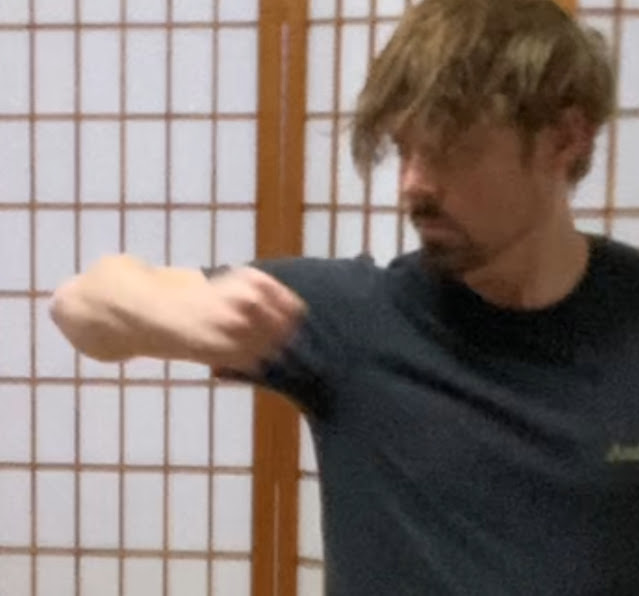I was asked to define the difference between Sports Karate kumite techniques and Budo Karate kumite techniques; that is, traditional karate. Accordingly, I will address this question today.
To begin with I need to state: “Yes! There are numerous
differences between 武道空手(Budo
Karate) and スポーツ空手
(Sports Karate) kumite techniques.
I will simply list the first five—off the top of my
head—which were (and continue to be) drilled into me by my mentors: since I
first came here to Japan in 1993.
Firstly, the objective of sports karate kumite technique is
to defeat the opponent by snatching points in a karate match— “ultimately to win
medals/trophies”, and/or, ‘to tag others more’ in the dojo.
In contrast, the prime objective of budo karate technique is
to ‘finish’ an attacker in any context—primarily “to survive an unprovoked
assault”. In sum, REAL KARATE. This underpins the constant seeking of 一撃必殺 (Ichigekki-Hissatsu).
Only by always seeking this objective (in all forms of daily training) is one
able to reach their maximum capacity.
Secondly, and intrinsically related to the first differentiation,
the distancing ‘to win’ in sports karate is where one can ‘reach the the
opponent’ then escape without being tagged in the process to gain a point;
furthermore, make the technique(s) clean and clear for the referee.
In contrast, Budo Karate uses proper 間合 (Maai —Meeting Distance) in every
technique. Therefore, the distance is inherently closer. The objective is for
each 技
(Waza) “…to be at the distance to cause the maximum amount of damage as
possible, if not controlled”.
Thirdly, sports karate kumite technique is vaguely connected
to the classical waza, basic kumite and kata.
Whereas and, again in contrast, the basic form, explosive
power, and 応用
(Oyo) are directly linked and inseparable from Budo Karate kumite techniques.
As my seniors always teach, and we follow: “Kihon, Kata and Kumite are ONE”. It
is essential to add here that this is not lip service, but the reality of our
training: every day.
Fourthly, sports karate technique is limited to certain
offensive techniques: primarily tsuki (thrusts), uchi (strikes), keri
(kicks), (ashi-barai) foot/leg sweeps,
and taoshiwaza /nagewaza (takedowns/throwing techniques).
Contrastingly, budo karate techniques primarily target the
most vulnerable points of the body and include all of the repertoire found in
the kata. This also includes the most dangerous impact techniques, shimewaza
(strangulation techniques), kansetsu-waza (joint locks, dislocations, breaks)
and so forth. In sum, top priority is given to the most effective techniques,
delivered to the most effective targets, in a fight: again, for survival.
Fifthly, sports karate kumite technique is shallow. It is
only for karate “games”. Post competition years, it is meaningless.
In contrast, Budo Karate kumite technique evolves through
one’s life. It includes waza that doesn’t require youthfulness to be highly
effective. Therefore, even if one competed, “…post competition one’s waza is
not sacrificed and continues to develop on the same path”.
With the last point in mind, I’d like to use an analogy.
Sports karate technique is the wide and easy road. It is plastic karate. It
even turns the dojo (plural) practicing the ‘traditional styles’ into McDojo. This is because the training of sports karate literally "...ingrains bad habits for real fighting/self-defense". It is why the Olympic Kumite Champion got knocked out, then won the gold medal... A true budoka would not accept a medal like this, nor any title, let alone an Olympic title. Doing such is highly dishonorable and has no place in any form of Budo. It is an embarrassment for "karate", but of course, this was not representative of TRUE karate.
To conclude, budo karate kumite technique is the narrow road. The 武 ‘BU’ Way will never be as popular as sports. That is because it is a difficult path with minimal ‘bling’. Yes, Budo Karate is tough. Nevertheless, like anything—that is truly authentic—it brightly shines from its truth, and “…this attracts everyone who is serious about karate as traditional art and effective form of unarmed self-protection”.
© André Bertel. Oita City, Japan (2024).







